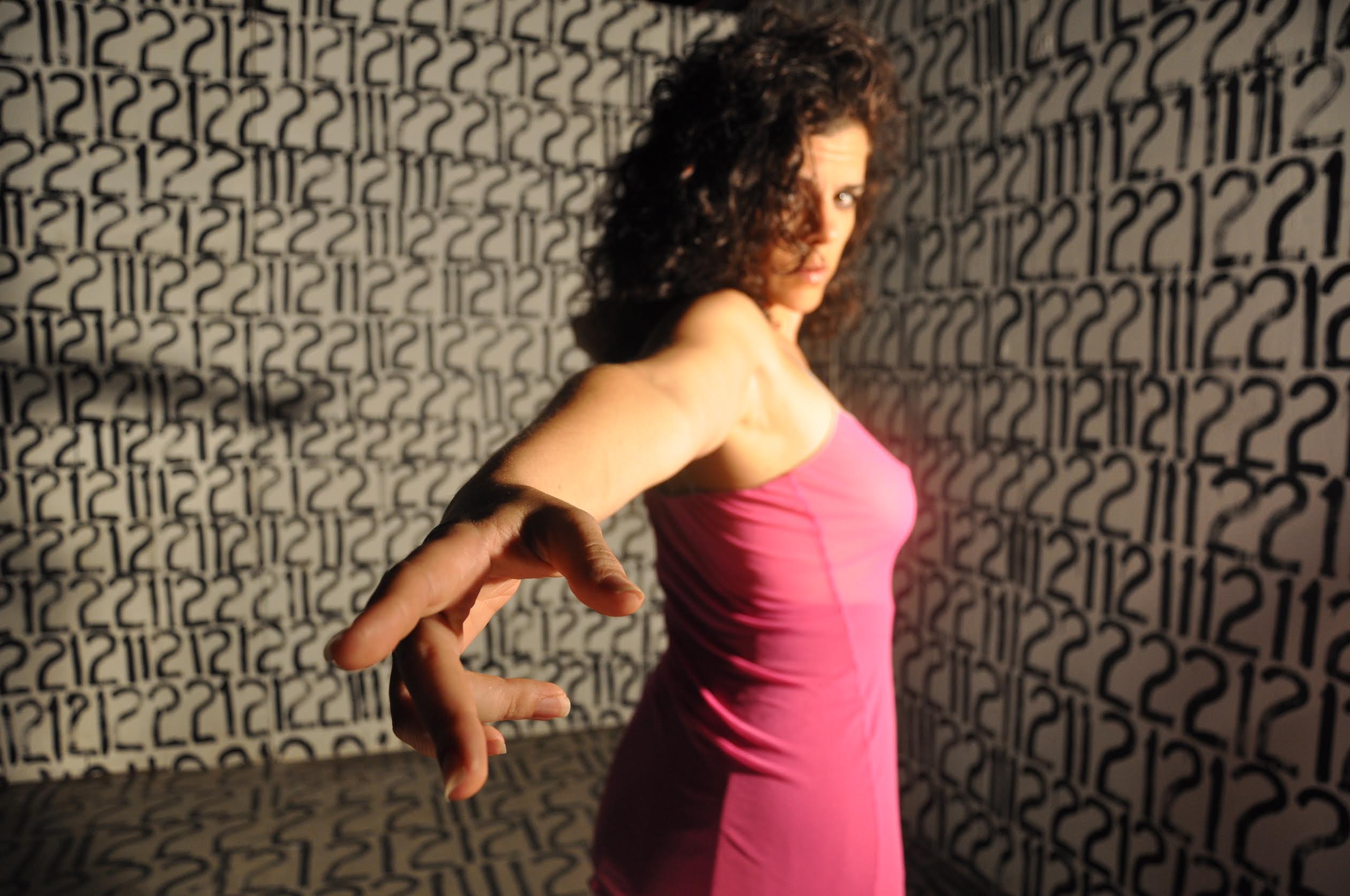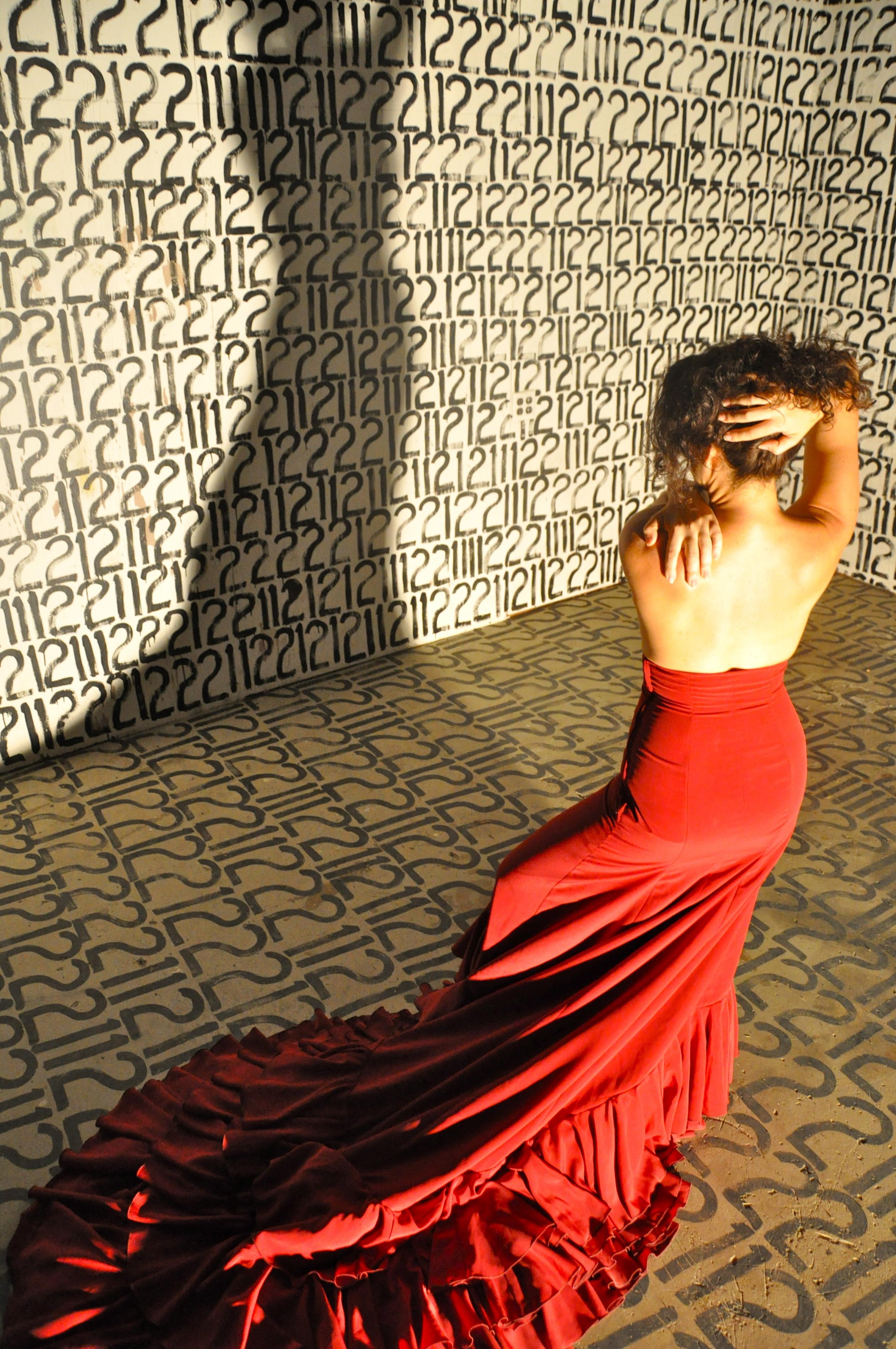
Miami dancer Niurca Márquez to fuse local history and flamenco in Knight-funded performance
Niurca Marquez. Photo by Nicole Wolcott of Keigwin & Co.
The Pioneer Winter Collective won a 2014 South Florida Knight Arts Challenge grant with its proposal for a site-specific performance initiative called Grass Stains. The project aims to articulate an exchange between a work of art or performance, and the place in which that work of art is set. Taking performance out of theaters and into streets, parks and cultural sites throughout Miami-Dade County opens up the possibility of transforming the urban landscape into a stage.
Dancer and choreographer Niurca Márquez, one of the Grass Stains artists, will use her funding to shape traditional elements of flamenco and embed them within the architecture of Miami. In this interview, Márquez documents her process and plans for developing her work-in-progress.
What are your plans for your Grass Stains funded site-specific project? After a series of site-specific projects in Spain and the site-specific work at the Atlantic Center for the Arts in 2014, I had wanted to do a site-specific work in Miami. I have always found inspiration in various corners of our city, and it seemed only natural that the next step would be to create something specifically for one of them. In March, I began a series of studies, “(Spaces and Places),” to gather information and inspiration for this future work, so the Grass Stains commission came at the perfect time. I plan to continue my work with traditional elements of flamenco in non-traditional places and formats.
How has living in Miami impacted and informed your development as an artist, as well as this project in particular? Growing up in Miami, I think you take diversity for granted, but I think it is the element that has most influenced my work and impacted my development as an artist. When translation is a natural and instinctual process, you don’t run from the unknown, you go toward it and find the points of commonality. It’s what helped me adjust to life and work in Spain, and what continues to inform my collaborative work in Miami and other parts of the U.S. In the development of this project, that diversity has prompted me to work with dancers and non-dancers, both flamenco-trained and not, to see if we can create an experience in a space that reflects a common dialogue and is infused with the history of the space chosen. We have so many corners filled with such rich history in Miami that we simply don’t know about or have forgotten. That is what I am interested in exploring here.

Niurca Marquez. Photo by Nicole Wolcott of Keigwin & Co.
What’s your personal and professional assessment of the local arts community and the impact of Knight-funded projects like Grass Stains? It continues to grow and surprise me. Grass Stains is a perfect example. It was an unfilled space, a body of work that was not being addressed, so Pioneer Winter, founder of Grass Stains, decided to fill it. It is also a direct response to the hybridity of Miami’s arts community. There is nothing like it anywhere else I’ve been. It has such a distinct identity and a [mix] of voices who are unafraid to speak their native tongue, meaning, the art form they were originally trained in, but also willing to venture into new languages, both literally and figuratively. A community that remains constantly curious and willing to leap into the unknown–that is a community that will continue to grow. That is what I see, a community that is not willing to simply be externally defined or adhere to the established norm, but demands representation and a place in the big picture. Artists here don’t keep quiet when they don’t agree or feel that an issue is not being addressed, and that is what I love about it.
If you could transform the community through your project, what would that transformation look like? Again, it’s about remembering. I want to collect all the information I can about the various locations I am scouting and dig out the stories that have been forgotten. I believe history is always relevant. I don’t think we change that much over time. In a community that is so diverse, I think those are the anchors we can hold onto, the points of interest when you are trying to get your bearings after arriving here from somewhere else or being here too long. Bringing this outdoors and to the surface through a site-specific work also helps people appreciate the beauty they pass daily as they go through life. Hopefully this will bring at least one person to value our place in time just a tiny bit more.
What would you do without funding for your project? I can’t say I wouldn’t do it, but it would be different and visibility would be compromised. Grass Stains is unique in that it is not only providing funding, but also providing mentorship, and I am so glad that the Knight Foundation saw the value in it and decided to fund the project. There have been many claims to site-specific work in Miami, but not all have succeeded as such. Mostly because I do not think some artists understand that if you are doing true site-specific work, it cannot be choreographed in a studio. You are reacting and composing in accordance with your “space,” so the information cannot be transferred there when it is complete, the entire process must take place there. This requires funding to pay for dancers’ time, permits, documentation, marketing to get audience there, etc., not to mention the time necessary for creating site-specific work, so I think without this funding and mentoring, I would still eventually do the work, but it would probably not reach as wide an audience and not be as informed as it can be after undergoing this full process.
Follow Márquez’s progress on this project on her blog.
Recent Content
-
Artsarticle ·
-
Artsarticle ·
-
Artsarticle ·
